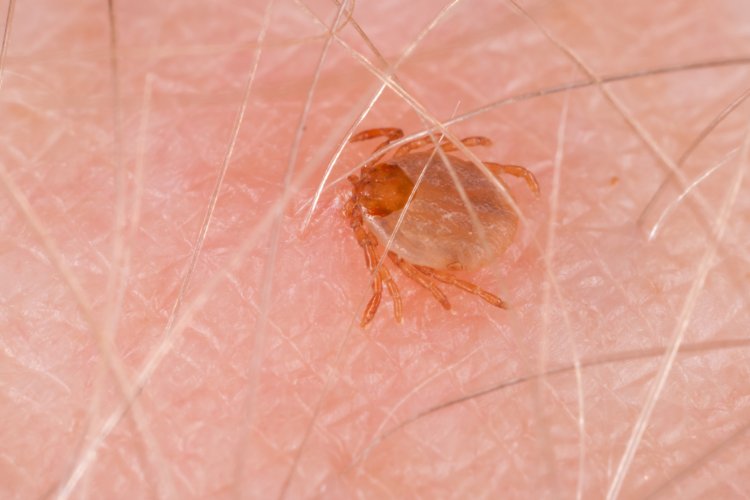Crimean-Congo Hemorrhagic Fever: A Comprehensive Overview
Crimean-Congo Hemorrhagic Fever (CCHF) is a severe viral disease that poses significant public health challenges, particularly in regions where the virus is endemic. The disease is caused by the Crimean-Congo hemorrhagic fever virus (CCHFV), a member of the Nairovirus genus within the Bunyaviridae family. CCHF is characterized by sudden onset of fever and a variety of other symptoms that can escalate to severe hemorrhagic manifestations and high mortality rates.

Etiology and Transmission
CCHF is caused by the CCHFV, which is primarily transmitted to humans through the bites of infected ticks, specifically those of the Hyalomma genus. Ticks act as both reservoirs and vectors for the virus. The disease is endemic in several regions, including Africa, the Balkans, the Middle East, and parts of Asia. Besides tick bites, the virus can also be transmitted through direct contact with the blood or tissues of infected animals, such as livestock, which can contract the virus from tick bites.
Secondary transmission of CCHF occurs through contact with the blood, secretions, organs, or other bodily fluids of infected persons. This can happen in healthcare settings, often due to inadequate infection control measures. Healthcare workers and family members caring for patients with CCHF are at particular risk.
Clinical Manifestations
The incubation period of CCHF varies depending on the mode of transmission. For tick bites, it is typically 1-3 days, but can be up to 9 days. For infection via contact with infected blood or tissues, the incubation period is usually 5-6 days, with a maximum of 13 days.
The clinical course of CCHF is typically divided into four phases:
Incubation Phase: The duration depends on the mode of transmission and ranges from 1-13 days.
Pre-hemorrhagic Phase: This phase lasts about 1-7 days and is characterized by sudden onset of high fever, chills, severe headache, dizziness, neck pain, stiffness, backache, sore eyes, and photophobia. Gastrointestinal symptoms such as nausea, vomiting, diarrhea, and abdominal pain are also common. Patients may experience a rapid heartbeat and a flushed face, red eyes, and a rash.
Hemorrhagic Phase: This phase begins on the fourth to fifth day of illness and includes severe bruising, nosebleeds, and uncontrolled bleeding at injection sites. Internal bleeding can occur, manifesting as melena (black stools), hematuria (blood in urine), and bleeding from the gums. This phase is critical and requires intensive medical care.
Convalescent Phase: Patients who survive the hemorrhagic phase begin to recover around 10-20 days after the onset of symptoms. Recovery is slow and can be complicated by fatigue, generalized weakness, and mood instability. Liver function tests can remain abnormal for a long period.
Diagnosis
Early diagnosis of CCHF is crucial but challenging due to its nonspecific early symptoms, which can resemble many other diseases such as malaria, typhoid fever, and other viral hemorrhagic fevers. Laboratory confirmation is essential and includes:
- RT-PCR (Reverse Transcription Polymerase Chain Reaction): This test detects viral RNA and is highly specific.
- Serology: Detection of specific IgM and IgG antibodies by enzyme-linked immunosorbent assay (ELISA).
- Virus Isolation: This involves culturing the virus from blood or tissue samples, which requires high biosafety level (BSL-4) facilities due to the risk of laboratory transmission.
- Antigen Detection: This method can provide rapid results and is useful in early diagnosis.
Treatment
There is no specific antiviral treatment for CCHF, making supportive care the cornerstone of treatment. Management includes:
- Fluid and Electrolyte Balance: Ensuring the patient remains hydrated and correcting electrolyte imbalances.
- Hemodynamic Support: Monitoring and maintaining blood pressure and oxygen levels.
- Blood Transfusions: To manage severe bleeding, blood products such as platelets and fresh frozen plasma may be required.
- Ribavirin: Although not universally accepted, ribavirin has been used with some reported success in reducing mortality if administered early in the course of the disease.
- Infection Control Measures: Strict adherence to infection control protocols is vital to prevent nosocomial transmission. This includes the use of personal protective equipment (PPE), safe handling, and disposal of medical waste, and isolation of infected patients.
Prevention
Preventing CCHF involves several strategies aimed at reducing the risk of tick bites and minimizing contact with infected animals and humans. These include:
- Tick Control: Regular use of acaricides on livestock to reduce tick populations.
- Protective Clothing: Wearing long sleeves, long pants, and using tick repellents when in areas known to be infested with ticks.
- Avoiding Contact: Limiting contact with the blood and tissues of livestock in endemic areas.
- Education and Awareness: Educating healthcare workers and the general public about the risks and preventive measures for CCHF.
- Infection Control in Healthcare Settings: Implementing strict infection control protocols, including the use of PPE and safe handling of blood and bodily fluids.
Crimean-Congo Hemorrhagic Fever is a life-threatening disease with significant public health implications. Understanding its transmission, clinical features, and management is crucial for controlling outbreaks and improving patient outcomes. While no specific antiviral therapy exists, supportive care and preventive measures play a critical role in managing the disease. Enhanced surveillance, prompt diagnosis, and adherence to infection control practices are essential components of the public health response to CCHF.
Disclaimer
The information provided in this article is for educational purposes only and should not be considered medical advice. If you have any health concerns or are experiencing symptoms, it is important to consult with a healthcare professional, such as a doctor or clinic, for proper diagnosis and treatment. Always seek the advice of your doctor or other qualified health provider with any questions you may have regarding a medical condition. Do not disregard professional medical advice or delay in seeking it because of something you have read in this article.
Hashtags
#Health #CCHF #ViralDisease #TickBites #InfectionControl #MedicalCare #PublicHealth #DiseasePrevention
What's Your Reaction?





















